ALGAE EATERS – THE 5 BEST FOR YOUR SALTWATER TANK

Today’s post is about Algae eaters for your saltwater tank. Before we get into our list of 5 best, I want to talk about the 3 key steps in implementing an algae control system. When most people have an outbreak, the first thing one might do is buy livestock to fix the issue. However, livestock is not the fix, but actually the control. Livestock controls algae and prevention measures fix outbreaks. Knowing prevention, the types of algae, and how to combat them will ensure that you implement the right algae control measures in your tank
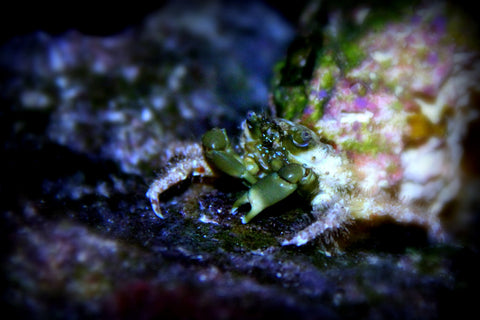
STEP 1 – KNOW HOW TO PREVENT ALGAE OUTBREAKS
The first step in controlling algae is preventative. Virtually all algae comes from the following sources:
- Age of tank
- Excessive Nutrients – Phosphates, Nitrates Silicates, TDS in source water
- Poor lighting
- Hitchhiked from live rock or coral purchases
Age of tank is usually the first issue. If your tank is establishing or just got out of its cycle, it is very common to get nuisance algae. Usually this starts with diatoms and then moves to hair algae and red slime. You get outbreaks because your bacteria cycle is still maturing. As you perform proper maintenance, your nutrient levels should stabilise. Stay patient if you are a newcomer experiencing your first bloom
WHAT DOES ALGAE EAT?
To answer the question about what does algae eat, let’s talk about excessive nutrients. The most common cause of Saltwater Aquarium algae outbreaks is poor source water. Water from the tap can be filled with silicates, phosphates, and nitrates that make nuisance algae thrive in your tank. Algae thrives no this nutrients as this is their food source and they will grow to consume these nutrients in your tank. These nutrients will then get “trapped” in the algae, meaning you will not be able to remove these nutrients out the system until you remove both the algae and the source of these nutrients.
After learning about the age of the tank, the second question I also ask hobbyist when they have an outbreak is where their source water is coming from. If you are not using an RODI System, you will have outbreaks unless your source water is very pure. Even with an RODI system, one can still have outbreaks and sometimes this is due to not replacing your RODI parts timely.
This brings us to the next part with nutrient control – maintenance. You need to have a proper maintenance schedule in order to prevent high nutrient levels. This means water changes, cleaning equipment, changing light bulbs if you use T5 fluorescent lighting, having a proper protein skimmer, and not overfeeding or overstocking your tank.
Poor lighting is another factor that is usually fixed easily. This is common with T5 fluorescent lighting as the spectrum and intensity degrades as the lights age. If you have older bulbs, you should replace them with fresh bulbs. If you have a light fixture that does not produce the correct spectrum, you should consider getting an appropriate reef light.
Hitchhiking algae is our last culprit. Macro-algae, Bryopsis, is and Macro Algae are usually the types of algae that make their way through Hitchhiking. You can avoid most of these issues by investing in dry rock instead of live rock. This leaves corals as your only source of introduction. You can limit your exposure by purchasing frags, inspecting corals before purchase, and only purchasing from reputable local or online stores.
Prevention is the first step in algae control. Our next stop is knowing your algae.
STEP 2 – KNOW YOUR ALGAE
When combating algae, you need to know what type of algae you are dealing with, how they come about, and how to limit or eliminate them. I will be going over the following algae below:
- Diatoms
- Dinoflagellates
- Film Algae
- Red Slime (Cyanobacteria)
- Hair Algae
- Bubble Algae
- Bryopsis Algae
- Calerpa Algae
DIATOMS
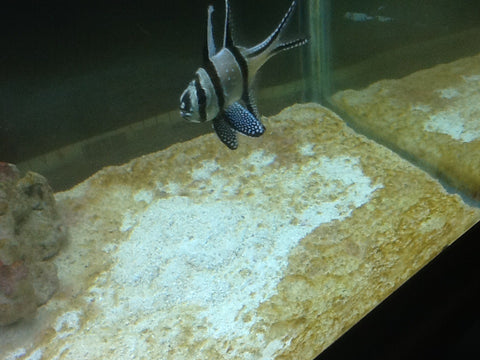
Diatoms are brown algae that usually appear when a tank has just completed its cycle. They can cover sand, rocks, pumps, glass…pretty much everything. They are unsightly, but harmless in your tank. Diatoms feed off silicates. You can prevent silicate by using an RODI system and keeping up with the maintenance. Even with proper maintenance though, they can still appear via additives, salt mixes, or using improper sand.
FILM ALGAE

This is a common algae in a tank that grows due to nutrients in the tank. They are not harmful, just unsightly and easily removed manually or eaten by algae eaters.
DINOFLAGELLATES

Also known as brown slime algae. This type of algae is some nasty stuff. They release toxins, will kill sensitive inverts like snails, and will feed off what they kill. Eliminating them in the tank requires a multi-prong approach involving granular activated carbon, black out periods, raising pH, reduced feedings, and manual removal. It’s not an outbreak to be taken lightly.
RED SLIME ALGAE (CYANOBACTERIA AKA CYANO ALGAE )
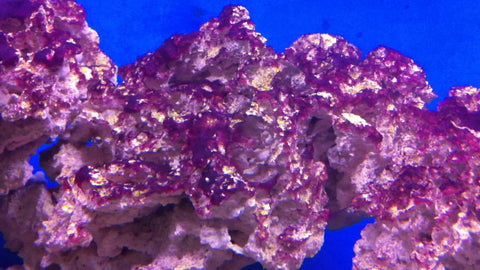
Often called algae, this is actually bacteria. Cyanobacteria is another common nuisance that pops up in a newer tank. While not harmful to fish, they are harmful to corals – especially soft corals. It is something that will always been present in your system. It is all about nutrient control with Cyano. The key parameters to control are phosphate (below 0.05 ppm) and nitrates (below 10 ppm). Nutrients can be locked in the red slime, so a common frustration point with reefers is their parameters test well, but the cyano is holding the nutrients until they are removed. Other factors are lighting and low flow. Redirect power heads and wave makers or add more to eliminate dead spots. If the tank is overtaken, you can manually remove by siphoning the cyanobacteria. Chemical options would be used as a good way of wiping out Cyano while address the long-term issue.
HAIR ALGAE
Hair Algae is an algae that thrives on nutrients. Having high phosphates and nitrates will cause this algae to thrive. Like Cyanobacteria, it can always be present in the tank, but can be controlled and virtually eliminated with good maintenance practices and algae eaters. You can also purposely grow in a container filtration unit like an Algae Scrubber where it can be used to keep phosphates and nitrates low and pH stable at night.
BUBBLE ALGAE
Bubble algae is usually introduced in the tank as a hitchhiker from either purchased live rock or corals. The best way to prevent it is to carefully inspect all of your rock or coral purchases for this hitchhiker. If you do end up with bubble algae, work to eliminate it early. You can manually remove it (but be careful about popping the bubbles or you will have it reproduce everywhere) or enlist algae eaters that specialise in eating this algae.
BRYOPSIS ALGAE
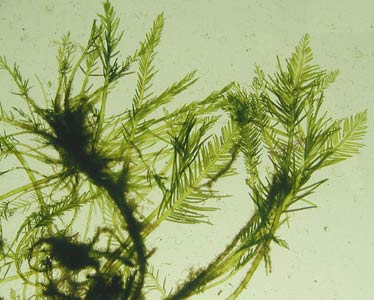
Bryopsis Algae is a fern-like algae that usually gets introduced in your aquarium from live rock or purchased corals. It is very difficult to get rid of and there are all sorts of horror stories about this algae. This is an algae unfortunately that many algae eaters will not touch.
The best way to get rid of it is to raise your magnesium levels using a supplement. You would want to increase your magnesium to the 1500 levels gradually over a week and keep it consistent until the Bryopsis is wiped out.
CALERPA ALGAE
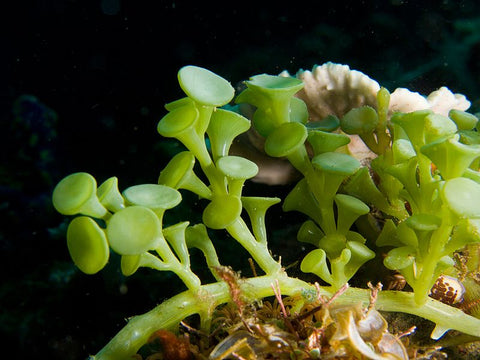
Calerpa Algae is another algae that finds its way to your tank as a hitchhiker. It is another algae that is difficult to get rid of, but there are algae eaters that will happily eat away at this algae. If it has over taken your tank, it is best to manually remove what you can and then implement the help of an algae eating crew to keep it contained. This algae, like many others on this list thrive on nutrients so keeping phosphates and nitrates low will limit its growth rate.
CHAETOMORPHA ALGAE
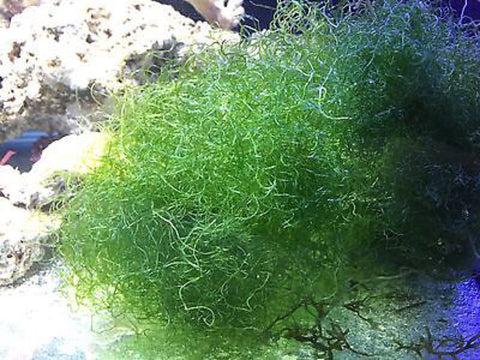
Chaetomorpha Algae is a single celled algae that is actually used as a beneficial type of algae in many saltwater aquarium setups. While not considered a nuisance algae, I listed this on here to saw that not all algae is bad algae. Chaetomorpha algae is usually placed in a sump and grown in a separate section of the sump to help control nitrates and phosphates. While it is fine in a sump, they do happen to hitch hike in the display aquarium when you purchase corals or live rock. They can quick grow out of hand if they grow in your display tank if there is nothing in the tank to eat it and may require manual removal to keep it in check.
STEP 3 – IMPLEMENT THE 5 BEST ALGAE EATERS
We have gone through preventative measures and identification. Since algae is always present in our systems, you should implement some algae eaters to control the algae that does make itself present. Step 1 and 2 were guides on how to prevent an outbreak. Step 3 is about how to implement the best crew to control the algae that does show up. Our 5 best algae eaters are listed below:
- #5 Nassarius Snail
- #4 Tailsport Blenny
- #3 Trochus Snail
- #2 Kole Tang
- #1 Emerald Crab
#5 NASSARIUS SNAIL
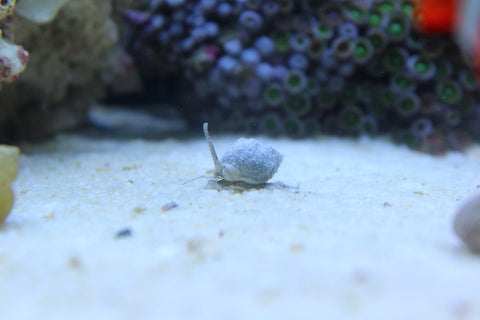
Stats:
- Temperament – Peaceful
- Minimum Tank Size – 10 gallons
- Size – 1/2″
- Care Level – Easy
- Target Algae – Any nutrient reliant algae
Contrary to belief, the nassarius snail does not directly eat algae. So why would it make this list? Because as we had discussed earlier, algae control is mostly about nutrient control. These are savaging snails that do an incredible job of eating detritus in the tank, keeping your nutrients in check, and algae at bay. They do most of their work in the sand, so they will only be compatible with tanks with a substrate. You can actually purchase tank bred nassarius snails. Check out this link to purchase Vibex Nassarius Snails.
#4 TAILSPOT BLENNY

Stats:
- Temperament – Peaceful
- Minimum Tank Size – 10 gallons
- Size – 2 1/2″
- Care Level – Easy
- Target Algae – Film Algae, Hair Algae
Most hobbyists think about the lawnmower blenny when it comes to an algae eating blenny. I tend to shy away from the lawnmower primarily due to its max size of 5″. The tailspot blenny has all the algae eating characteristics of the lawnmower blenny but in a smaller, more colourful, and more peaceful package. They have great personalities and are a great addition to your tank.
#3 TROCHUS SNAIL
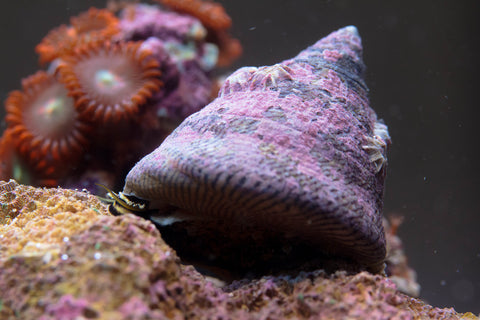
Stats:
- Temperament – Peaceful
- Minimum Tank Size – 10 gallons
- Size – 1″
- Care Level – Easy
- Target Algae – Cyanobacteria, Diatoms, Film Algae, Macro Algae
The trochus snail is the ultimate reef snail. It will mow down several types of nuisance algae, get a decent size, and have the ability to flip itself over. Its shell shape makes it difficult for crabs to eat it as well. It does not take many of these snails to establish a good clean up crew in a tank. Every reefer should consider these snails. You can purchase Trochus Snails from this Miami based LFS
#2 KOLE TANG
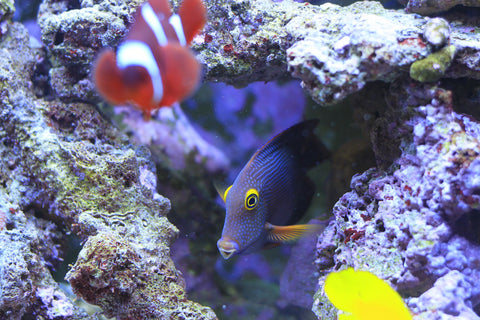
Stats:
- Temperament – Semi-aggressive
- Minimum Tank Size – 70 gallons
- Size – 7″
- Care Level – Moderate
- Target Algae – Film Algae
The Kole Tang makes our list for a few reasons. It is one of the smaller tangs you can put in your aquarium, which means that those with a medium sized tank can house them. They tend to be less aggressive in smaller aquariums than yellow, purple, or scopas tangs. Kole tangs will eat film algae though in some cases will eat hair and macro algae. For those with larger tanks, a yellow tang or a foxface/rabbitfish would be a viable candidate for hair and macro algae. If you have a much larger tank mixing both a bristle tooth tang like a Kole and a zebra species tang or foxface/rabbitfish make for a solid algae control team.
#1 EMERALD CRAB
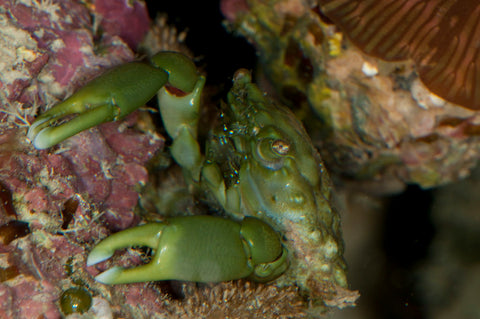
Stats:
- Temperament – Semi-aggressive
- Minimum Tank Size – 10 gallons
- Size – 2 1/2″
- Care Level – Easy
- Target Algae – Bubble Algae, Hair Algae, controls nutrient reliant algae
The emerald crab is well known for eating bubble algae. It is a scavenger that will feed on uneaten foods and many types of nuisance algae. They are generally a peaceful invert, but can become an opportunistic eater if food sources are low. This invert should be part of any clean up crew in a reef tank. If you are going to get an emerald crab, ensure that your crab is guaranteed to eat bubble algae. There are some clean-up crew sellers out there that guarantee their crabs will do so, and those are the ones you want. You will also want to make sure you purchase a female as they are typically less aggressive than males. A picture is shown below so you can tell the difference:
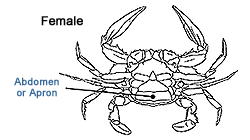
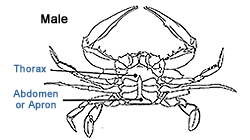
HONOURABLE MENTION – CERITH SNAILS
Stats:
- Temperament – Peaceful
- Minimum Tank Size – Any
- Size – 1″
- Care Level – Easy
- Target Algae – Cyano, Hair Algae, Film
The Cerith Snail makes it to our honourable mention. Many reefers would put these to the top of their list, but I have it an honourable mention for a few reasons. The first is that they can reproduce in the aquarium and you can have dozens of snails in a short period of time. The second is their size – they tend to be pretty small which can be a bad thing if they get sucked into your overflow box and cause some issues with plumbing.
Aside from that though they are a great hybrid cleaner. They clean on the rock, glass, and sand. They all are most active at night so they tend to avoid getting eating by fish who like to snack on snails. Their small size makes them ideal for nano reef tanks. They are also dirt cheap to get in large qualities. Just check out this deal on 100 cerith snails.
WHAT ALGAE EATERS HAVE YOU USED?
So that’s my list folks. These 5 aquatic animals we feel are the best algae control livestock you can add to your saltwater aquarium. If you want to go the equipment route, I would highly recommend an algae turf scrubber for controlling all types of nuisance algae growth.
Did we miss any of your favourites in the list above? Share what we missed in the comments below and please share this post with others if you found it helpful. Thanks for reading!

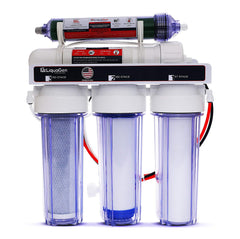



Great Tips
LikeLike